Rajasthan’s Cultural
Heritage |


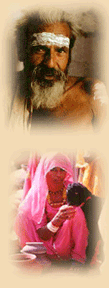





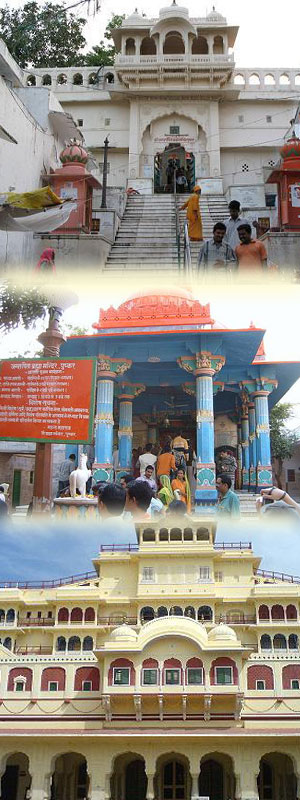
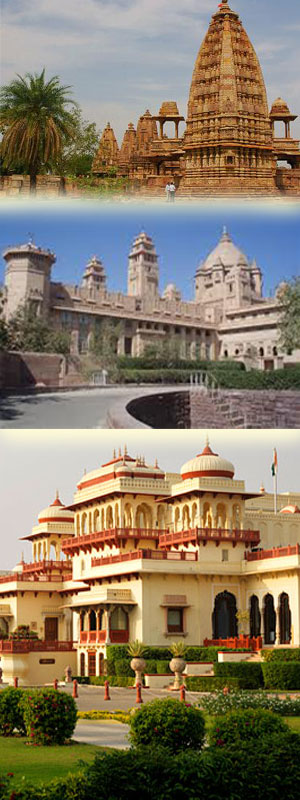
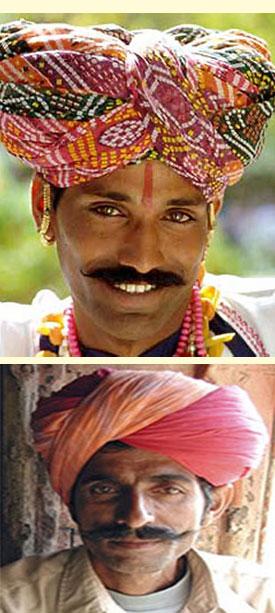
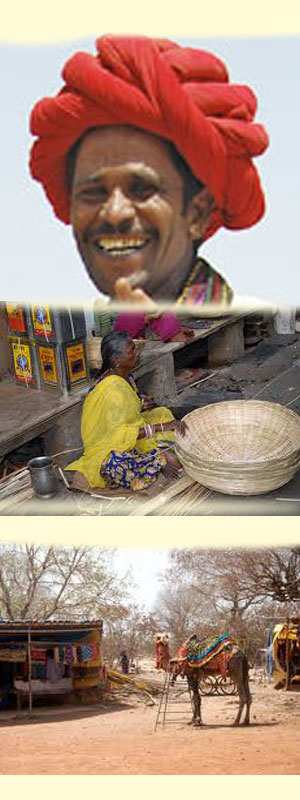
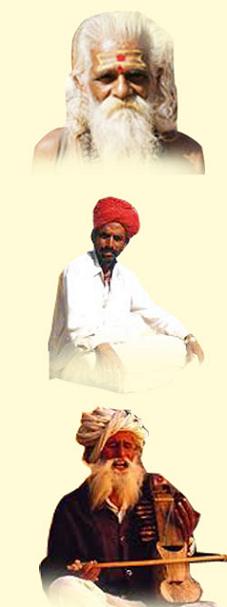
 |
 |
|
 |
|
 |
|
 |
|
|
|
|
|
|
|
Rajasthan’s Cultural Heritage |
|
The literal meaning of the word
‘Rajasthan’ or ‘Rajisthan’ is ‘Rajdhani’ i.e. the capital. It was in 1829 that
Col. James Tod in his monumental work The Annals and Antiquities of Rajasthan
first extended the denotation of the term to include the entire state. Before
independence, Rajasthan comprised twenty-one principalities and two self
governing feudal houses with Ajmer-Merwara – a British domain situated in the
Center. Among the twenty-one States were Udaipur, Dungarpur, Banswara,
Pratapgarh, Shahpura, Bundi, Kota, Sirohi, Karoli, Jaisalmer, Jaipur, Alwar,
Jodhpur, Bikaner, Kishangarh, Jhalawar, Datan, Bharatpur, Dholpur, Tonk and
Palanpur. The feudal houses were Kushalgarh and Lava, of these, Datan and
Palanpur were amalgamated in Gujarat while the rest formed the modern state of
Rajasthan.
The geographical features of the state have affected the people making tem not
only hardy but also tenacious and chivalrous. Rajasthan is the land of
warriors and heroes, saints and holy men patriots and martyrs. It was only
with the amalgamation of the states in 1947 the note was taken of the arts and
crafts that had been nurtured under the patronage of the princes and feudal
lords. These, it was realized, were specimens of a distinctive culture. Modern
Rajasthan cherishes these rich traditions that are still alive in the works of
art and literature. |
|
|
|
|
Architecture |
|
It is apparent from
the archaeological remains at Kalibanga, Ganeshwar, Ahar, Noha,
etc., that planned lay-out of towns and construction of
buildings had started from the time of the Indus Valley
Civilization (in nearly 3,000 B.C.). Architectural ruins of the
Epic age and the subsequent Maurya, Gupta and Rapt eras are
found scattered in many places. It is remarkable that from the
12th century works on architecture came to be written. Among
these is the renowned Apraitoricha. Architecture further gained
in originality and beauty through the renowned architect, Shilpi
Mandan, who wrote extensively about this sphere of art in his
works, Prasad Mandan, Rajvallabh, Debmurti Prakran and Vastu
Mandan. The tradition was carried on by his brother Natha who
wrote Vastu Manjiri and by his son, Govind, the writer of Kala
Niddhi and Dwar Dipika. |
|
|
|
|
Forts and Palaces |
|
The forts of
Rajasthan are amongst the foremost in the country, incorporating
the special features elaborated in ancient texts on construction
of forts. Thus there are the ‘Kavsees’ and ‘Jeev rakha’ that
have the advantages of both sentinel towers or bases and
embrasures. Noteworthy among the rock fortresses, ‘Giri Durg’ of
Rajasthan is Chittorgarh, Kumbhalgarh, Ranthambore, Siwana,
Jalore, Mehrangarh (Jodhpur), Taragarh, Aamer, Rajgarh, Dausa
and Kuchaman. Outstanding among the ‘Jal Durgs’ (i.e. forts
erected in water) is Gagron fort near Jhalawar, built on the
confluence of the rivers Ahu and Kali Singh. Besides these,
there are some well-known forts constructed in level plains,
like the forts of Jaisalmer, Junagarh (Bikaner), Nagaur and
Chomu. It is not only the architecture beauty, the imposing
structure and reputed invincibility of the forts, but also the
legends of chivalry associated with them that attract the
tourist.
Fergusson, a lover of art, marveled at the beauty of the many
palaces of Rajasthan. While the palaces built by the Rajputs
have small rooms and a simple design, the influence of Mughal
art and architecture led to the construction of richly decorated
large edifices, with Diwan-i-aam, jharokas (decorative windows)
and gardens with fountains and ponds. With the advent of the
British, palaces that were built within the ramparts of the fort
came out of this enclosure. While almost every palace has its
own unique beauty, there are some that stand out for the
enduring beauty of their murals, frescoes, fine stone carvings
and their ornamentation.
The ‘havelis’ (mansions) at Jaipur, Jaisalmer, Karoli, Bharatpur,
Kota, Ramgarh, Navalgarh, Fatehpur, Mukundgarh, Mandawa, Pilani,
Sardarsahar, Ratangarh, etc. are examples of architectural
excellence. While some are admirable for the exquisite stone
latticework, others are of interest for their murals or the
harmony of design. |
|
|
|
|
Temples |
|
Rajasthan shares the
composite culture of ancient India. Both near the Chittor and at
Bairath near Jaipur there are ruins of the Buddhist period. And
it was here again that the temple of Vishnu was built when the
country came under the sway of the Vaishnav cult. Even in its
ruins that stand today, on the banks of the river Bedach, can be
seen that wonder which was the first Vaishnav temple of India.
Rajasthan nurtured almost all the leading religions of India.
Here were established large center of Buddhism, Jainsm,
Vaishnavism and Shaivism. And while these have disappeared
without a trace in other states, Rajasthan has preserved the
legacy of these artistic creations that are an expression of the
faith of the devotees of various religions. And therefore,
several temples built from the Gupta age to the 19th century can
be found here today.
One of the earliest temples on which the date of its
construction is inscribed is the temple of Sheetleshwar Mahadeo
at Jhalarapatan. The major part of the temple was constructed in
689 A.D. from the 8th to the 10th century, temples in the Gurjar
– Pratihara style were built at Lamba, Buchkala, Mandore,
Abhaneri, etc. The Sachiyaya Mata temple at Osian is an
excellent example of this style of architecture. Subsequently,
the Chouhans built magnificent temples at Kaikeend, Harshnath,
Nadol etc. In the south-eastern region, the temples at Badol,
Ramgarh, Menal and Kansua need special mention.
In Rajasthan there are numerous Jain temples. Among the
principal ones are Mahavir Mandir at Ghanerao, Parshavanath
Mandir at Sadri, Navlakha Mandir at Pali and Adinath Mandir at
Narlai. Others are found at Nadola, Abu and Ranakpur. The
Adinath temple at Dilwara built in 1031 A.D. by Vimal Shah is
considered unparalleled for its ornate pillars, finely carved
marble roof and the lincaments and forms of the statues
ingeniously chiseled to express a wide range of emotions. It
has, therefore, been considered an exquisite architectural
achievement. Challenging comparison is the Jain temple at
Ranakpur which is called by various names like Choumukha Mandir,
Trailokya Deepak, Chaturbhuj Vihar, etc. It is said that the
piety of Rajasthan may be seen enshrined in stone in the Surya
Mandir of this temple.
Fourteen miles to the north of Udaipur, on the road to Nathdwara
stands the temple of Lord Sri Eklingji built by Bappa Raval. It
has stood through the centuries in its beauty and splendid
isolation a witness to momentous historical events. |
|
|
|
|
Sculpture |
|
The tradition in the
art of sculpture in Rajasthan can be traced back to the
Kalibanga civilization that flourished 4000 years ago. Many
earthern statues were discovered in kalibanga, Ahad and Gilund.
From time to time there are several other statues, (eastern,
stone and metal) of ancient times, that have been excavated in
different parts of Rajasthan. Most of these relate to the
Puranic or Jain religions. One of these is the beautiful forty –
two inch statue of Yaksh of the pre-Gupta era. Equally
significant are the finds in Raid, Bairath and Nagar.
One of the marvels of ancient sculpture is the statue of
Mahishasurmardini. The statues of the pre-Gupta era are either
in the Gandhara or the Mathura style. But there are also those
of the Gupta period that have been found in excavations at
Mukundara, Krishnavilas, Bhinmala, Mandore and Pali. The Vishnu,
Krishna and Balarama pieces at Kama and the Goverdhandhari
Krishna at Mandore are considered invaluable pieces of art. Also
inimitable are the Shiv-Parvati at Rang Mahal, Sambhar, the
Shiva statues at Kalyanpur and the Durga at Naliyasara. This art
developed finesse after the Gupta period. The statues at
Bharatpur, Karoli, Mainala, Dabok and Dholpur being expressions
of varied emotions and states of mind, the rasas. The statues at
Kiradu have been widely appreciated for the portrayal of
‘Sringar’ (adornment), and love and for their ornamentation. The
statues are embodiments not only of beauty of form but also of
spirit. These in the temple of Dilwara at Abu and also the ones
at Jodhpur, Lordrava and Jaisalmer have been highly commended
for their exquisite craftsmanship.
The advent of the Vallabh community in Rajasthan gave a new
direction to sculpture. Amongst the creations that show their
influence are Srinathji (Natdwara), Dwarkadeeshji (Kankroli),
Mathureshji (Kota), Govindadevji (Jaipur), Ratnabihariji and
Dauji (Bikaner) etc. A distinctive feature of the culture of
Rajasthan is that its legacy in sculpture is a composite of
various religions : Buddhism, Jainsm, Shaivism and the Vaishnav.
It is sculpture of a very high caliber like Sri Maliram
Gulabchand, T.P. Misra, Gopichand Misra, Ramratan Mishra,
Rajendra Misra, Mukutbihari Natta, Omprakash Natta, Anandilal
Verma, Ayyaz Mohd., Gangaram, Usha Rani Hooja, Haridutt Gupta,
Devi Singh Rathore to whom Rajasthan owes its place of pride in
the field of this art. |
|
|
|
|
Painting |
|
Art critics like
Anand Coomaraswamy, Percy Brown and N.C. Mehta have considered
Rajasthan’s contribution in the sphere of painting as
significant. The earliest specimens of paintings in this states
are found in the caves of the Chambal Valley, and the
excavations/ruins of Kalibanga and Ahad. These include lines
deciphered on pots, utensils and seals. Complete pictures and
paintings are no longer in existence as, compared to other forms
of ornamentation these perish faster with the passage of times.
There are, however other sources that help to trace the progress
of this art. The Buddhist Lama, Taranath in ‘Buddha Dharma’
indicates that there were accomplished painters in this desert
region. The art of painting had developed in Gujarat and this
arid land ‘the Maru Desh’ prior to the 13th century. An evidence
of this is the exposition of the ‘Kalpsutra’ style in the Jain
literature of the time.
Different styles of painting developed under the patronage of
the rulers in the princely states of Rajasthan. Noteworthy among
these are the styles of painting evolved in Jodhpur, Bikaner,
Alwar, Jaipur, Kishangarh, Mewar and Bundi. The styles are
identified by the difference in the use of color and border,
portrayal of birds and animals, the human form and features, the
shape of the eyes and ornaments. For instance, in the paintings
of Jodhpur and Bikaner, the predominant color is a bright
yellow, in Jaipur green, in Udaipur red, which in Kishangarh,
bright saffron in Bundi and bright green in Alwar. For the
scenic setting, the Jodhpur and Bikaner artists chose a mango
tree, the crow the kite and the camel, Jaipur and Alwar a peepul
trees and the peacock, Kota and Bundi, a palm tree, the deer and
the lion. The smooth flowing lines of the eye in Jodhpur
paintings give it an almond like shape, in Jaipur it is
elongated like a fish, in Udaipur large and liquid like the eye
of a deer, arched like the bow in Kishangarh, like a mango leaf
in Bundi and like the little khanjan bird in the Bikaner style
of painting.
Initially, the influence of the Ajanta style is noticeable in
the paintings but after the 17th century the influence of the
Mughal style is evident. Later there was an admixture of the
Punjabi style and when, subsequently, the Rapt rulers joined
forces with the Mughals in their military expeditions to
southern India, the influence of the South too crept in. the
styles in Rajasthan undoubtedly had some basic similarities.
Originally, the Mewar painters drew a round face with a pointed
nose and ‘deer eyes’ or ‘meenadkshi – like eyes’. The Marwar
School while retaining these facial features gave the forms
vestments and ornaments in the Mughal style. Both in Nathdwara
and Bundi, the facial features and forms were drawn in the Mewar
style, with Bundi painters giving the background of mountains,
streams and trees.
The exquisite Kishangarh paintings have a clearly
distinguishable style. The art developed in the time of Samand
Singh who was also known as Nagridas. Nagridas was greatly
influenced by the Vaishnav sect and the women popularly known by
the name ‘Banithani’. Nagridas and Ban thani were painted
together like Radha Krishna. But it is ‘Nihal Chand’s potrait of
Bani thani that is generally considered to be a masterpiece of
Rajastani painting. In the opinion of connoisseurs of art if
stands comparison with the world famous Mona Lisa.
Along with divergences, and touches of originality and paintings
in Rajasthan share certain common features. These are the use of
bright colors and the choice of themes like the Ragas, the
seasons and scenes from the Bhagwat Gita, the Ramayana and the
Geet Govinda. All the styles initially were influenced by the
Ajanta paintings and later by Mughal ones.
The art has been modernized through the efforts and creations of
artists like Master Kundan Lal Mistry, Muller (a German artist),
Bhattu Lal, Bhoor Singh Shekhawat, Nandlal Verma, Shivnarain ‘Chaugan’,
Ramgopal Vijayvargeya, Devakinandan Sharma, Vishnudutt Sharma,
Gopal Ghosh, Dwarka Prasad Sharma, Sakhalkar, Parmanand Choyal,
V.C. Girl, Jyoti Swaroop Mohan Verma, Premcand Goswami, Vidhya
Sagar Upadhyaya, Sumahendra, Radhavallab Suresh Sharma, Shail
Choyal and others. |
|
|
|
|
Music |
|
In his famous work
the History of Persia Malcolm the well known historian recounts
that in the 5th century the Emperor Bahram Ghor of Iran attacked
India and carried away with him twelve thousand musicians. He
further notes that it could only have been Rajasthan and Gujarat
that could have survived such devastation.
In Rajasthan, the royal houses accorded a place of honour to
musicians. Rajasthan also has he distinction of having produced
several treatises on music, e.g. Hamir’s ‘Shringarhaar’,
Kumbha’s ‘Sangeetraj’. Pundrik Vithali ‘Raagmala’, Ustad Chand
Khan’s ‘Swasagar’, Pandit Bhavbhatt’s ‘Murli Prakash’, Dwarka
Prasad’s Bhatt’s ‘Raag Chandrika’, Radha Krishna’s ‘Raag
Ratnakar’, Krishnanand Vyas ‘Raag Kallpadrum’.
In the temples of Nathdwara, Kankroli, Jaipur, Kota, etc.
‘haveli sangeet’ with all its traditional distinctive features
is still alive. The couplets and verses of Mira, Daadu,
Charandas and other poet devotees have been set to music in the
different ragas. The contribution of Rajasthan singers in the
‘Dhrupad’ style cannot be ignored. Through the encouragement of
the court musician Bahram Khan, the Daagar Gharana (school of
music) in ‘Dhrupad Dhamas’ came into existence and flourished in
the time of Maharaja Swai Man Singh. The famous singer of old,
Manrang is considered to be the fonder of the Khayal style of
the Jaipur gharana. The art prospered through the dedicated
efforts and innovative variations of several gharanas of music
like the Allahdiyan Khan gharana, Soniya gharana, Bikaner
gharana, Agra gharana, Qawal Bachhon gharana and others. The
melodious ‘Maand Raga’ is also a creation of Rajasthan. In our
time, Allahjillai Bai of Bikaner and Gavri Devi of Jodhpur have
each added the charm of a freshness and individuality in their
exposition of monad.
In Rajasthan, Dholi, Mirasi, Langa, Dhadhi, Kalawant, Bhaat, Rao,
Jogi, Kanad, Vairagi, Gandharva, Bhopa, Bhavai, Rana, Kalbelia,
etc. are castes of professional musicians and singers.
Folk instruments devised on simple principles of sound reveal
the ingenuity of the creators. The wide varieties of the
instruments provide music suitable for all occasions and
festivals.
The main folk instruments are Sarang, Jantar, Ravana – hatha,
Ektara, Apang, Kamayacha, Bansuri, Algoja, Pungi, Shehnai,
Satara, Mashq, Nad, Morchang, Tota, Bankiya, Shankh, Singi,
Mridang, Dholak, Dhol, Nagada, Narpat, Maadal, Chang, Khanjari,
Matka, Daph, Damru, Taasa, Manjira, Jhangh, Thali and Khartal. |
|
|
|
|
Dance |
|
The Origin of Kathak
can be traced to Rajasthan. The style (of dramatizing and
enacting a story in dance form) developed through the
presentation of Puranic tales in temples. Here the Jaipur
Gharana particularly that of Sanwal Das made a significant
contribution in the development of the dance form.
While the ghoomar is popular all over Rajasthan there are other
regional folk dances too: the gidar and Chang Nritya of
Shekhawati, the Gair of Marwar – Mewar, the Dandia of Marwar,
the Dhol nritya of Jalore, the Agni nritya of Bikaner and the
Bum nritya of Alwar-Bharatput. The Chari dance, Bhavai, Teratali
and Kachchi ghori are the enchanting dances of some of the
nomadic tribes. |
|
|
|
|
Theatre Arts |
|
There is a rich
tradition in performing arts, especially folk theatre which
includes performances of Bhopa, Bhand, Bahurupiya, madaari, Nat,
Bajigar etc. The traditional folk presentations are Khayal,
Rammat, Tamasha, Leela, Bhavai, Phad, etc.
In the beginning of the 20th century the establishing of the
‘Parsi theatre’ gave a new dimension to dramatic performances.
It provided a stimulis to producers like Mehboob Hasan (in Alwar)
who produced a number of plays. Others whose contribution is
significant are Manaklal Dangi, Kahhaiyalal Panwar and Ganpatlal
Dangi.
Among radio artists who have come to the limelight through the
Jaipur Radio Station are Om Shivpuri, Sudha Mohan Mahirshi,
Nandlal, Pinchoo Kapoor, Goverdhan, etc. In 1957, the Government
of Rajasthan established the Rajasthan Sangeet Natak Academy,
which further led to the instituting of various theatre groups
like the Ravindra Manch at Jaipur, the Bhartiya Kala Mandal at
Udaipur, and the building of the first modern auditoriums to
promote the theatre. As a result there are today a large number
of people working in this sphere: Devilal Samar, hamidullah,
Mani Madhukar, Bhanu Bharti, Sartaj Mathur, D.N. Shaini, Vasudev
Bhatt, Ravi Jhankal, Srichand Makhija, Suresh Kaul, Abhay Bajpai,
Devendra Malhotra, Prithvinath Zutshi, N.P. Saxena, Ahatram
Nagir, Mangal Saxena, A.G. Khan, Rizwan Zaheer Usman, Qayyum
Bohra, Madan Mohan Mathur, Arjun Deo Charan, Ramesh Borana,
Rajanand, Dalpat Parihar and others along with these is Komal
Kothari who is associated with presentations in the country and
abroad. |
|
|
|
|
Handicraft |
|
The story of man’s
ingenuity and creativity goes back in antiquity to the Stone
Age, but there is late archaeological evidence of not only
earthen pots and pans but also of ivory articles having been
crafted in the far-off historical past.
Some of the traditional crafts are still flourishing today:
Jaipur stands out for its enamel work, though enameling is done
in Nathdwara and Pratapgarh too. Besides, Jaipur craftsmen are
known for making ornaments inlaid with precious stones and for
blue pottery. Famous for paintings and decoration of large
vessels of camel hide is the usta family of Bikaner. Unbreakable
earthen toys and crockery moulded at Molaila have made their
way into the export market. Lakh bangles are now a part of the
ethnic outfit. Block printing in traditional designs and colors
is continued at Balotra, Barmer, Pali, Jaisalmer, Chittor,
Sanganer, Bagru, Kaladera, Jodhpur etc. and is widely
appreciated in the world of fashion today. While the dyers of
Jodhpur have exhibited consummate skill in preparation of the
work of ‘tie and dye’ fabrics in vibrant colors, there are
skilled craftsman in Bikaner, Barmer, Pali, Udaipur and
Nathdwara too. In many areas of Rajasthan attractive rugs and
carpets are woven. The ‘badla’ or embellished water bottle of
Jodhpur is again an elegant piece of handiwork. |
|
|
|
|
Literature |
|
The efforts of the
litteraeurs in Rajasthan in no small way led to the growth of
Sanskrit, Prakrit, Apbhransh, Dingal and other languages and
dialects. Far back in the 7th and 8th century Chittor was the
center of Bhinmal literature. Creative writing was enrichd by
the works of Jinbhatt, Haribhadra, Ilacharya, Virsena,
Jinabhadra Suri, etc. it was at Bhinmal in the 7th century that
the poet Magh wrote Shishupul Vadh. A brilliantly executed work
in literary merit equals the work of Kalidasa, Bhairava and
Dandina. Bhinmal is also the birthplace of the mathematician and
astrologer Brahm Gupta who in scholarship, is compared to
Aryabhatt and Varahinihir. His well-known works are
Brahmsiddhant, Khandkhandya and Dhyangraha.
In the 14th century literature flourished through the efforts of
Jain scholars. Among king’s Maharana Kumbha stands unrivalled.
His reputation rests on his work Sangeet Raj and Sangeet
Mimansha, the Jaidev’s celebrated Geet Govind. His rein
witnessed the growth not only of Sanskrit and Prankrit but also
of Rajasthan literature and language. With Maharana Kumbha,
royal patronage of the arts and literature became a tradition,
which bore rich fruit in the time of Amar Singh and Raj Singh.
In the reign of the former, were written the Sanskrit texts.
Amarsar and Amar Bhushan and it was in the reign of the latter
that Ranchod Bhatt wrote Amar Kavya, a comprehensive work about
the achievement of the ruler as well as about the culture of the
time: dress, ornaments, festivals, etc Sadashiv’s Raj Ratnakar,
written in the 17th century is also a work of considerable
important.
The rulers of Marwar too encouraged the literati, Maharaja Gaj
Singh having honored fourteen poets, bestowing on them the award
Lakh Pasaav. It was under his patronage that Hemkavi wrote
Gunbhasha and Kesavdas, Gunrupak. Maharaja Jaswant Singh was not
only a royal benefactor of artists but also scholar himself. The
poets Suratmishra and Narhridas and the historian Nainsi were
his contemporaries. The reign of Abhay Singh produced three
notable figures, Jagjeevan, the author Abhay Uday, Karnidan, the
author of Surajprakash, and Virbhaan, the author of Raj Roopak.
The time of Man Singh is considered the golden age of
literature. The court poet Bankidas at this time composed Manaj
Somandar and Nankidas reBatan that have great importance in the
history of literature of Sanskrit and Rajasthan. Among poets who
wrote in Dingal are Issar Das and Dursa Arha. Issar Das wrote
both devotional poetry as well as fiery war poem celebrating the
exploits of heroes in warfare.
Bikaner too gave birth to a royal scholar – Rai Singh who wrote
Jyotish Ratnakar and Mahotsav. More notable is his composition
Krisna Rukmani reveli that has been considered a classic. Other
works of a high order are Ganganand maithil’s Karnbhushan and
Maharana Anoop Singh’s Anoopvivek, Kamprabhod and the commentary
on Geet Govind. In his court was the musician Bhavv Bhatt (son
of Shahjehan’s renowned court musicians Janardhan Bhatt) who
wrote treatise on music. Jerawar Singh encouraged critical study
of ancient classics and during his reign were written
commentaries of Vedaksar, Rasikpriya and Kavipriya and in the
reign of Gaj Singh was produced Gopinath’s Granthraj. Another
man of letters, Dayal Das is honored for his memorable work
Khayaat.
A landmark in the history of literature in Rajasthan, is Suraj
Mal Mishra’s history Vansh Bhashkar. Mishra is considered the
precursor of a new awakening in literature. His Veer Satsainis
an incomparable poetic exhortation rousing men, to chivalry and
valour (a veer rasa poem).
Man Singh of Amer was known for his munificence to men of
letters. The story goes that when the poet Gung wrote a
promissory note for a thousand rupees in favor of a beggar and
sent him to the king, Man Singh reproved him for being
niggardly. It was also the talk of the town that Man Singh’s
confident; the poet hapoji had a hundred elephants. Of Maharaja
Jai Singh who was famed to be a linguist, it was said that he
presented a gold coin for each couplet composed for Bihari
Satsain. Sawai Jai Singh was an astrologer and mathematician.
The treatise that he wrote in 1733 Jeej Muhammedshahi after
discussions with scholars in Europe and Arabia is considered a
treasury of astronomical knowledge. In his court was an
assemblage of learned men. The library of manuscripts and
ancient texts at Jaipur is his gift to posterity.
Each state can boast of a scholar or a ruler who contributed to
the advancement of literature, e.g. in 16th century Dungarpur
lived the famous scholar Bhatt Somdutt and in Kishangarh the
renowned poet who wrote in Brijbhasha, Nagri Das. Amongst rulers
there were Somar Singh and Kushal Singh of Banswara known for
their patronage of the arts.
The poets of renascent India today are Umardan Lalas, Ganeshilal
Vyas, Kanhaiyalal Sethia, Satyaprakash Joshi, Gajanan Verma,
Meghraj Mukul, Rewatdan Charan, Kishore Kalpana Kant,
Mauj
Dipawat, Chandra Singh, Gangaram Pathik and others. |
|
|
|
|
Religious Traditions |
|
One of the
characteristic features of Indian culture is the importance of
religious beliefs in the life of the people. Owing to its
geographical situation, this state has, since medieval times,
been able to preserve the various royal houses and the arts and
culture, religion and literature nurtured by them. The
wilderness of the vast desert areas and the mountain ranges
discouraged invaders and gave people the security needed for the
flourishing of the arts. Besides, all religions and sects, alien
to the State, also found a place of refuge here. Along with
this, the cults of the many saints and folk deities of Rajasthan
have enriched the lives of the people, imparting to it a unique
spirituality. A glance at these deities shows how religious
belief is closely knit with the life of the people.
GOGAJI: Gogaji is the most revered of the five
saints of the land. His father Jeverji Dadrekha was the ruler of
Churu in the 16th century B.C. He was martyred in the struggle
for the protection of cows, the riches of the land. He is,
therefore, represented as a warrior on horseback in icons and
pictures. He is also worshiped in the form of a serpent. It is
believed that if a person bitten by a snake seeks his
protections, the venom is rendered harmless. The place sacred to
him is the Khejri tree and under this his serpent statues are
installed, and hence the well known saying: every village has a
Khejri and every village a Goga.
At the Gogamedi fair commemorating his birth, both Hindu and
Muslim devotees from after, assemble to pay homage to him as
‘Nag-Raj’ – the victor over the serpent or ‘Goga – Pir’, the
saint. A cord with nine knots, called the ‘Goga rakhdi’ is tied
to the plough and the ploughman’s wrist before he begins his
labours of the season.
TEJAJI: Tejaji is another hero who laid down his
life for the protection of cows. A gigantic fair is organized at
Parhatsar (Nagaur) to commemorate the day on which his soul set
forth in its journey to its heavily abode. At the fair, his life
story is recounted, byavalas are recited and Khyalas pertaining
to his life are performed. His followers wear silver amulets
depicting him as a warrior on horseback with his sword drawn
while a serpent is shown biting his tongue. It is believed that
Tejaji’s cords tied round the right foot of a person bitten by a
snake completely cures him.
‘Teja Ter’ is invariably sung throughout Marudhar before the
sowing of crops.
PABUJI: The popular annual fair at Kolu (Phalodi)
is dedicated to the memory of a valiant hero, Pabuji who is
considered an incarnation of Lakshman. He died fighting for the
protection of cows. Pabuji’s high ideals include honoring
womenfolk, protecting pastoral wealth and helping the weak and
desolate. He was also a reformist and opposed untouchabality. He
has been hailed as the god of camels. Of the outbreak of
diseases among camels, Pabuji’s help is sought and on the
eradication of the disease Paabuji’s Phar is sung by Bhopas and
Thorees.
DEVJI: Devji born in 1243 A.D. is accredited with
the performance of many miracles in Mewar. His devotees are
mainly Gujars who celebrate his birthday singing his praises in
‘Devji Ki Phar’, ‘Baghrawat Devji ki Baat’. Devji is considered
to be an incarnation of bravery and chivalry. A large fair is
held at Dehmali on theday on which Devje renounced the world.
MALLINATHJI: Mallinathji became the ruler Mahewa
in 1374 A.D. In 1398 he became a disciple of Ugamsi Bhati on the
advice of his wife Roopande. It is believed that he became a
Siddha (an entightened one) and had visions of future events. He
was a monotheist and believed in Nirguna Nirakar God: a Supreme
Being without feature and form. It is after him that Barmer is
known as Malavi. He died at Tilwara (Barmer) on the banks of the
river Looni. A large annual fair is held here every year around
the temple constructed in his memory.
RAMDEVJI: Ramdevji’s valour became evident at an
early age, when he vanquished the cruel Bhairav and put an end
to the atrocities he had committed on the inhabitants of Pokaran.
He helped in the coming up of the village Runecha which is now
famous as Ramdevra. The largest fair of the state is held at
Ramdevra in the month of Bhadrapad. He is revered on the one
hand by Hindus as an incarnation of Lord Krishna, and on the
other by Muslims as the saint Rama Peer. He opposed casteism and
welcomed the people of lower castes to his cult. Temples
dedicated to him are called “Than” and usually have his
Pagaliyas. His devotees are abundant in Gujarat also.
HARBHUJI: While living in Phalaudi, inspired by
Ramdevji, Harbuji shunned weapons and was baptized by Guru
Balinathji. Harbuji was considered to have the gift of prophetic
speech. He was also an ardent reformist. His fame is testified
by the fact that after him Phalaudi came to be known as
harbhanmal.
MEHAJI: Mehaji is included among the Panch Peer
(the five holy men) of Rajasthan and is revered widely. Not much
is known about his life.
There have besides these been innumerable holy men who have from
time to time brought about a religious awakening and tried to
improve the quality of life by overcoming social evils. In this
tradition those who stand out are: Sant Dhanna, Peepa, Jambhaji,
Jasnathji, Laldas, Haridas, Niranjani, Daadu dayal, Mira Bai,
Charandas, Ramcharan, Acharya Bhikshu, Khwaja Muinuddin Chisthi,
Shaikh Hamiduddin Nagori. |
|
|
|
|
|
|
|
|
|
|
|
|
|
|
www.rajasthan-tour-package.net
Copyright ©
Rajasthan-Tour-Package. All Rights Reserved.
|
|
|
| 
















